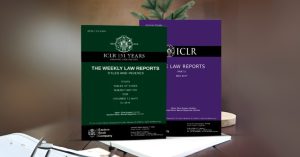
We all know that governments tend to tax “bad” things more heavily — cigarettes, alcohol, sugary drinks, even gambling. But why? And do these taxes actually work, or do they just punish people for their personal choices? In this post, we’ll explore the economics behind so-called sin goods, examine global data, compare policies across regions, and finally zoom out to see how sin taxation fits into broader public health and economic strategies.
What Are Sin Goods and Why Tax Them?
Sin goods are products whose consumption is considered harmful to individuals or society. Common examples include:
- Tobacco
- Alcohol
- Sugar-sweetened beverages (SSBs)
- Gambling
- Recreational drugs (where legal)
Why Do Governments Tax Sin Goods?
Correcting Negative Externalities
Consumption of these goods creates social costs such as healthcare burdens, accidents, and productivity losses. Sin taxes aim to internalize those costs by raising prices.
Raising Public Revenue
These taxes can generate significant revenue, especially in low and middle-income countries. Funds are often earmarked for health programs or education.
Discouraging Harmful Behavior
Higher prices through taxation reduce demand, especially among young or low-income consumers. This supports public health objectives.
But Not Everyone Agrees
Critics argue that sin taxes can be:
- Regressive, disproportionately affecting lower-income households
- Easily circumvented, through black markets or cross-border shopping
- Politically manipulated, sometimes designed more for revenue than health
Global Data and Impact of Sin Taxes
Let’s compare how different countries implement sin taxes and what effects they have had.
Comparative Table: Effects of Sin Taxation by Country or Region
| Region or Country | Type of Sin Good | Tax or Price Change | Observed Effects | Comments |
|---|---|---|---|---|
| Global (modeled) | Tobacco, Alcohol, SSB | 20% price increase | Large reductions in disease burden, millions of life-years gained | Based on economic modeling across nations |
| Saudi Arabia | Soft Drinks and SSB | New sin tax introduced | Sales dropped by approximately 57 percent over 7 years | Strong consumer response observed |
| Catalonia (Spain) | Sugary Beverages | Tax added in 2017 | Sugar intake from drinks fell by 2.2 percent | Consumers substituted with low-sugar drinks |
| Latin America | Tobacco, SSB | Various sin taxes | Reduced consumption, improved health outcomes | Success varies by implementation |
| United Kingdom | Multiple sin goods | Ongoing taxation | Sin taxes now make up a smaller share of total revenue | Due to falling consumption and inflation |
| India | Cigarettes and Tobacco | 57.6 percent of retail price | Below WHO’s recommended 75 percent rate |
Digging Deeper: Price Sensitivity, Elasticity and Fairness
How Consumers Respond: Price Elasticity
- A 10 percent price hike in sugary drinks often reduces consumption by 10 to 15 percent
- Tobacco and alcohol show lower elasticity due to addiction, but young or low-income users are more responsive
- Consumers often substitute harmful products with alternatives such as diet drinks
Who Really Pays: Tax Incidence
- Studies show a small segment of the population often lower-income bears a large share of sin tax burdens
- In one analysis, 10 percent of households paid over 80 percent of cigarette and alcohol taxes
- Because these groups spend a higher share of income on taxed goods, the policy can be regressive
Revenue Versus Behavior: Can We Have Both?
- Initially, sin taxes can increase government revenue, especially where consumption is high
- However, as behavior changes, revenue may plateau or decline
- For example, in developed countries like the UK, real revenue from tobacco and alcohol taxes has declined as a percentage of total tax collection
Challenges in Implementation
While conceptually sound, sin taxes face practical obstacles including:
- Growth of black markets due to high prices
- Industry lobbying against regulation
- Cross-border shopping to evade taxes
- Inflation and rising incomes that reduce real deterrent effects
- Administrative and enforcement burdens
Zooming Out: Sin Taxes in a Broader Perspective
When we step back, it becomes clear that sin taxes are not just about making guilty pleasures more expensive. They are part of a much broader policy approach with wide-reaching implications.
Public Health Strategy
Sin taxes are a central component in efforts to reduce noncommunicable diseases such as diabetes, heart disease, and cancer. When paired with regulation, labeling, and education, their impact is significantly greater.
Social Justice Considerations
To address concerns about regressivity, some governments use sin tax revenue to:
- Fund public healthcare
- Offer subsidies for low-income groups
- Promote preventive health programs
Fiscal Sustainability
In many low and middle-income countries, sin taxes represent a stable and politically feasible way to increase revenue. They can be instrumental in funding universal health coverage and other essential services.
Behavioral Economics in Action
Sin taxes act as a financial nudge that pushes people toward healthier choices without banning behavior outright. But for best results, they need to be supported by access to alternatives and awareness campaigns.
Parallels to Other Global Issues
Like carbon taxes, sin taxes put a price on harmful behavior. Both types of taxes aim to change incentives while also generating funds for socially beneficial programs. This reflects a global shift toward using taxation not just to raise money, but to shape better outcomes for society.
Integrating GST Realities: From Kitchen to Closet
To understand sin taxes in context, it helps to look at how more universal consumption taxes (like GST) reshape everyday budgets. A recent analysis—“From Kitchen to Closet: How 5 % GST Reshapes Your Budget”—offers useful parallels to carry into our sin tax discussion.
















